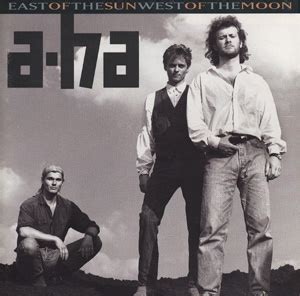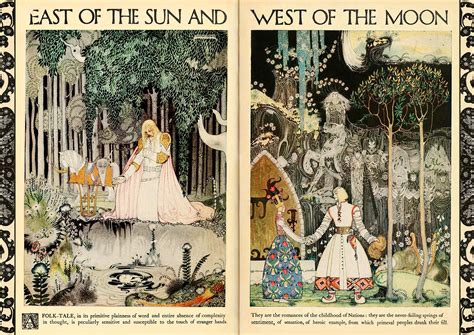fendi east of the sun and west of the moon | east of the sun wikipedia fendi east of the sun and west of the moon Fittingly, Lagerfeld found his inspiration in a 1914 fairy tale collection, East of the Sun and West of the Moon. The book’s original authors were folklorists Peter Christen Asbjørnsen and. Introducing. The New Rolex Air-King (Finally) Ask and you shall receive – I bring you the Rolex Air-King! This year at Baselworld we have seen the new Daytona, the Explorer, the Datejust 41, and now the Air-King. This puppy has a ton of new features and has a relatively good price (for a Rolex).
0 · west of the moon wiki
1 · west of the moon and east wind
2 · east of the sun wikipedia
3 · east of the sun west of moon
4 · east of the moon
5 · Fendi fashion show 2016
6 · Fendi fashion
7 · Fendi dresses fall 2016
Tank Must watch, small model, high autonomy quartz movement. Steel case, beaded crown set with a synthetic cabochon-shaped spinel, silvered dial, blued-steel sword-shaped hands, interchangeable black grained calfskin strap, steel ardillon buckle.
west of the moon wiki
Fittingly, Lagerfeld found his inspiration in a 1914 fairy tale collection, East of the Sun and West of the Moon. The book’s original authors were folklorists Peter Christen Asbjørnsen and."East of the Sun and West of the Moon" (Norwegian: Østenfor sol og vestenfor måne) is a Norwegian fairy-tale. It was included by Andrew Lang in The Blue Fairy Book (1889). "East of the Sun and West of the Moon" was collected by Peter Christen Asbjørnsen and Jørgen Moe. It is related to the cycle of the Animal as Bridegroom or . Lagerfeld found his starting point in a 1914 book of fairy tales, East of the Sun and West of the Moon, illustrated by the Danish artist Kay Nielsen. . More specifically Karl chose East of the Sun and West of the Moon created in 1914 by folklorists Peter Christen Asbjørnsen and Jørgen Engebretsen Moe. The fairytale was .
In Fendi's 90th anniversary tour-de-force at the Trevi Fountain, Karl Lagerfeld's "Legends and Fairy Tales" collection included several designs drawn directly from TASCHEN's . The forty-six look haute fourrure show, aptly titled Legends and Fairy Tales, was inspired by Kay Nielsen’s Art Nouveau/Art Deco illustrations in the classic Norwegian book East of the Sun and.
gucci x balenciaga.
It’s worth, instead, seeking out his work as a book illustrator, especially 1914’s East of the Sun and West of the Moon, which Taschen has just reissued in a lavish new edition. East of the Sun comprises fifteen stoical and . It all started with an early 20 th century edition of East of the Sun, West of the Moon, a Norwegian fairy tale with pictures by the famous children's book illustrator Kay Nielsen, ."East of the Sun (and West of the Moon)" is a popular song written by Brooks Bowman, an undergraduate member of Princeton University's Class of 1936, for the 1934 production of the . "East of the Sun and West of the Moon: Old Tales from the North" by Asbjørnsen et al. is a collection of traditional folk tales likely compiled in the late 19th century.

Fittingly, Lagerfeld found his inspiration in a 1914 fairy tale collection, East of the Sun and West of the Moon. The book’s original authors were folklorists Peter Christen Asbjørnsen and."East of the Sun and West of the Moon" (Norwegian: Østenfor sol og vestenfor måne) is a Norwegian fairy-tale. It was included by Andrew Lang in The Blue Fairy Book (1889). [1] "East of the Sun and West of the Moon" was collected by Peter Christen Asbjørnsen and Jørgen Moe.
Lagerfeld found his starting point in a 1914 book of fairy tales, East of the Sun and West of the Moon, illustrated by the Danish artist Kay Nielsen. Several of his illustrations directly. More specifically Karl chose East of the Sun and West of the Moon created in 1914 by folklorists Peter Christen Asbjørnsen and Jørgen Engebretsen Moe. The fairytale was based on stories they encountered in their conversations on a journey across Norway. In Fendi's 90th anniversary tour-de-force at the Trevi Fountain, Karl Lagerfeld's "Legends and Fairy Tales" collection included several designs drawn directly from TASCHEN's recent reprint of East of the Sun, West of the Moon, illustrated by Kay Nielsen. The forty-six look haute fourrure show, aptly titled Legends and Fairy Tales, was inspired by Kay Nielsen’s Art Nouveau/Art Deco illustrations in the classic Norwegian book East of the Sun and.
It’s worth, instead, seeking out his work as a book illustrator, especially 1914’s East of the Sun and West of the Moon, which Taschen has just reissued in a lavish new edition. East of the Sun comprises fifteen stoical and weirdly moving Norwegian folktales , boasting names like “Prince Lindworm,” and “The Giant Who Had No Heart in .
It all started with an early 20 th century edition of East of the Sun, West of the Moon, a Norwegian fairy tale with pictures by the famous children's book illustrator Kay Nielsen, which Lagerfeld found at his friend Sandy Brant's place. His curiosity was piqued.
"East of the Sun (and West of the Moon)" is a popular song written by Brooks Bowman, an undergraduate member of Princeton University's Class of 1936, for the 1934 production of the Princeton Triangle Club's production of Stags at Bay. [1] "East of the Sun and West of the Moon: Old Tales from the North" by Asbjørnsen et al. is a collection of traditional folk tales likely compiled in the late 19th century. Fittingly, Lagerfeld found his inspiration in a 1914 fairy tale collection, East of the Sun and West of the Moon. The book’s original authors were folklorists Peter Christen Asbjørnsen and.
west of the moon and east wind
"East of the Sun and West of the Moon" (Norwegian: Østenfor sol og vestenfor måne) is a Norwegian fairy-tale. It was included by Andrew Lang in The Blue Fairy Book (1889). [1] "East of the Sun and West of the Moon" was collected by Peter Christen Asbjørnsen and Jørgen Moe. Lagerfeld found his starting point in a 1914 book of fairy tales, East of the Sun and West of the Moon, illustrated by the Danish artist Kay Nielsen. Several of his illustrations directly.
More specifically Karl chose East of the Sun and West of the Moon created in 1914 by folklorists Peter Christen Asbjørnsen and Jørgen Engebretsen Moe. The fairytale was based on stories they encountered in their conversations on a journey across Norway. In Fendi's 90th anniversary tour-de-force at the Trevi Fountain, Karl Lagerfeld's "Legends and Fairy Tales" collection included several designs drawn directly from TASCHEN's recent reprint of East of the Sun, West of the Moon, illustrated by Kay Nielsen. The forty-six look haute fourrure show, aptly titled Legends and Fairy Tales, was inspired by Kay Nielsen’s Art Nouveau/Art Deco illustrations in the classic Norwegian book East of the Sun and. It’s worth, instead, seeking out his work as a book illustrator, especially 1914’s East of the Sun and West of the Moon, which Taschen has just reissued in a lavish new edition. East of the Sun comprises fifteen stoical and weirdly moving Norwegian folktales , boasting names like “Prince Lindworm,” and “The Giant Who Had No Heart in .
It all started with an early 20 th century edition of East of the Sun, West of the Moon, a Norwegian fairy tale with pictures by the famous children's book illustrator Kay Nielsen, which Lagerfeld found at his friend Sandy Brant's place. His curiosity was piqued."East of the Sun (and West of the Moon)" is a popular song written by Brooks Bowman, an undergraduate member of Princeton University's Class of 1936, for the 1934 production of the Princeton Triangle Club's production of Stags at Bay. [1]
east of the sun wikipedia
east of the sun west of moon

This table contains 39 series, with data for starting from 1991 (not all combinations necessarily have data for all years). This table contains data described by .
fendi east of the sun and west of the moon|east of the sun wikipedia

























